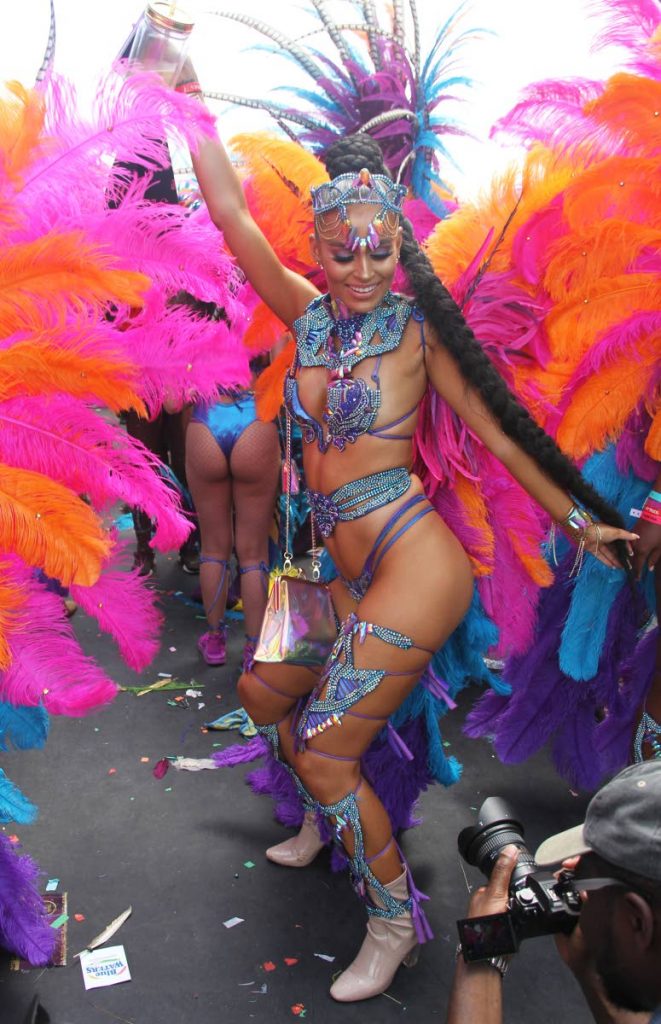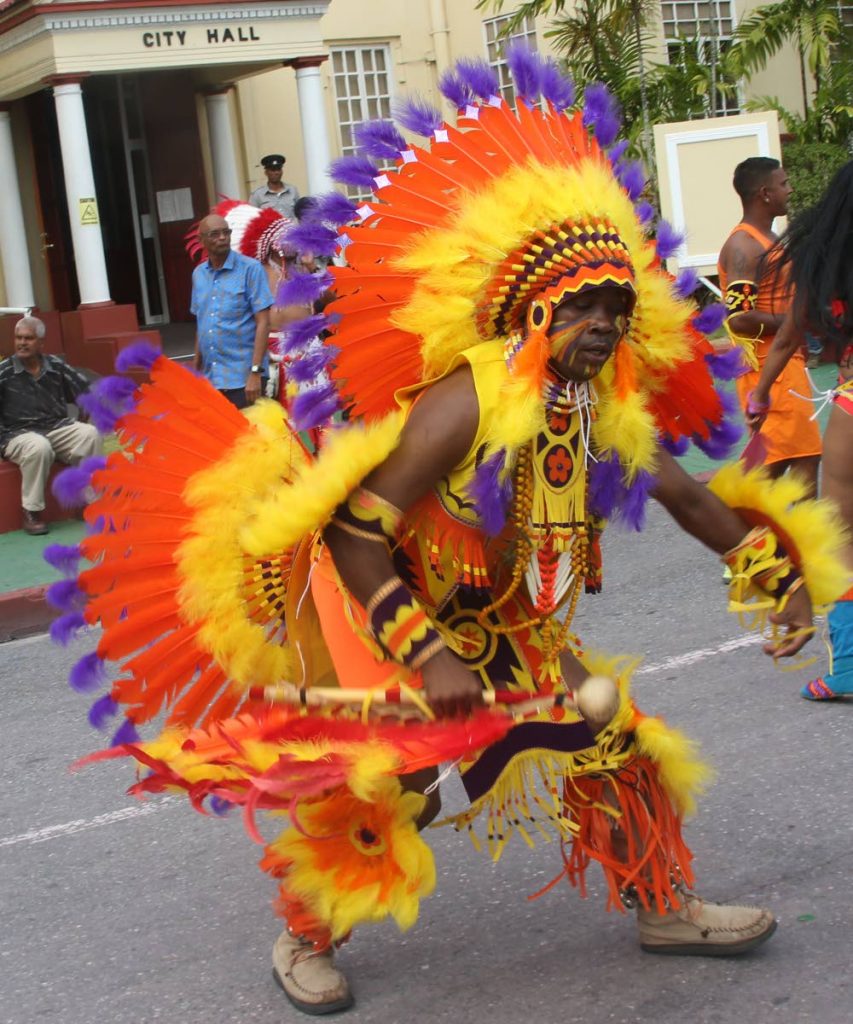Carnival, beyond Monday and Tuesday

NYSSA PIERRE
You did it! You played yourself on the Savannah Grass with your Famalay and trampled the Judgement Stage. Carnival 2019 is over and your feet are sore, voice gone and you’re probably battling some version of the Mr Killa flu.
But while your eardrums are likely happy for the change of pace, somewhere around April/May, the Carnival bug bites again: only this time, there is no home-grown cure for the itch. Lately, Trinis (and Tobagonians) with disposable income find themselves in other islands like Jamaica (April), Barbados (August) and cities like London (August), New York (September) and Miami (October) to recreate what we so dearly love and miss outside of our Carnival season.
If you ask most of us to describe our culture, Carnival is almost invariably a common thread, so much so that it’s our calling card to introduce foreigners we meet to visit the island. So, it begs the question, if Carnival is such an important part of our culture and is our greatest cultural export, why is it not accessible to us, and by extension, the world, more readily throughout the year?

I am not suggesting Carnival Monday and Tuesday should happen more than once a year. Frankly, we cannot afford the lack of workplace productivity it brings. I am, however, asking if we should look to leveraging our love for and expertise in Carnival and form a sustainable year-round – versus seasonal – industry that benefits both locals and foreigners.
Take, for example, the dilemma of a foreigner who has just managed to escape with finances barely intact after Thanksgiving and Christmas. While they would love to experience Trinidad Carnival, it is likely not cost effective for them to do so.
And even for those who would like to participate virtually, save for private concert events like Machel Monday and Kes’ Tuesday On The Rocks, it is almost impossible and often frustrating for foreigners and foreign-based nationals to access high quality, properly produced online and television streams of Carnival’s biggest shows, including the flagship Monday and Tuesday parades.

There is no logical reason why someone should not be able to visit this country and enjoy an immersive experience at a Carnival museum, complete with iconic costumes like Man Crab and Tan Tan and Saga Boy, view current costumes and traditional mas, learn to walk like a moko jumbie, see how wire is bent to make our ethereal creations and visit a panyard.
Given the choice, potential visitors must either wait until the season comes back around, or else, spend tourist dollars on other islands or countries with activities available year-round.
In Brazil, for example, where Rio de Janeiro’s carnival is as emblematic of the country as its football team, tourists are able to visit the various carnival cities throughout the year, getting a taste of what the February/March period has to offer. While enjoying all of Brazil’s other sights and sounds, they can participate in an element of their culture that, like us, is very central to both identity and economy.

By contrast, let’s look at the traveller who has managed to save their money and fly to our slice of heaven. One of the selling points of a successful brand is accessibility but for many, Carnival is anything but that. A true foreigner, with no familial of friend connection here, faces the Herculean task of purchasing costumes, determining which fetes are right for them and getting tickets to said fetes prior to arrival. And while the National Carnival Commission (NCC) has improved its local distribution of the cultural event calendar, how many foreigners are actually even aware of this body and the kind of information it shares? In a digital age where there is nothing that is not available at our literal fingertips, information about and access to the best parts of our Carnival cannot truly claim to be accessible online, a deterrent to the modern traveller.
To say nothing of event and costume prices that increase annually. Carnival is quickly becoming financially inaccessible and less attractive to some. There are now many Caribbean carnivals – inspired by our own – gaining momentum, buoyed by islands with traditionally strong destination marketing campaigns and visitor-friendly facilities. While it is unlikely they will ever achieve the scale of our festival by sheer virtue of numbers, local designers and promoters have wholly exported both the modern costume aesthetic and events, which historically far separated our celebration from that of other islands. These islands’ carnivals are scattered throughout the year, giving rise to many more options than TT’s first quarter festival. They are often cheaper to get to, with more reasonable accommodation and now feature the same costumes and events.
Are we to hope that our reputation stands the test of time without evolving while others continue to innovate? Are we serious about making Carnival truly competitive and remaining relevant in a space in which the gap is rapidly closing? How do we close that gap?
The answer lies in focusing on the true, often overlooked, differentiating factor of sweet TT’s Carnival – our rich historical, cultural element.
Truly, the centuries-long history that brought about and defines the evolution of our Carnival is unique, indisputable and patently unavailable for export. Canboulay, stick-fighting, blue devils, traditional mas and fierce Panorama rivalries are so intrinsic to our identity that we would do well to look inward.
Other carnivals are quickly catching up but they will simply never be able to earnestly claim that which makes our Carnival so incredibly unique. Imagine entertaining guests in August and being able to show them the re-enactment of the Canboulay riots, giving them a true understanding of “the mas,” so when and if they are able to come during the season, they have a true sense of “we ting”. Imagine costume creators finding year-round employment and affording thousands of cruise ship passengers the unique opportunity to create their own headpiece in October to take back home.
TT has all the elements to take Carnival to the next level. We have the passion, the ingenuity and the skill. What we now need is the strategic, sustainable roadmap that goes far beyond executing the two-day parade.
Once we get it right, we can truly claim the title of “the Greatest Show on Earth.”
The writer is a public relations and event management consultant. She is the founder and owner of Pear Tree Consulting.


Comments
"Carnival, beyond Monday and Tuesday"